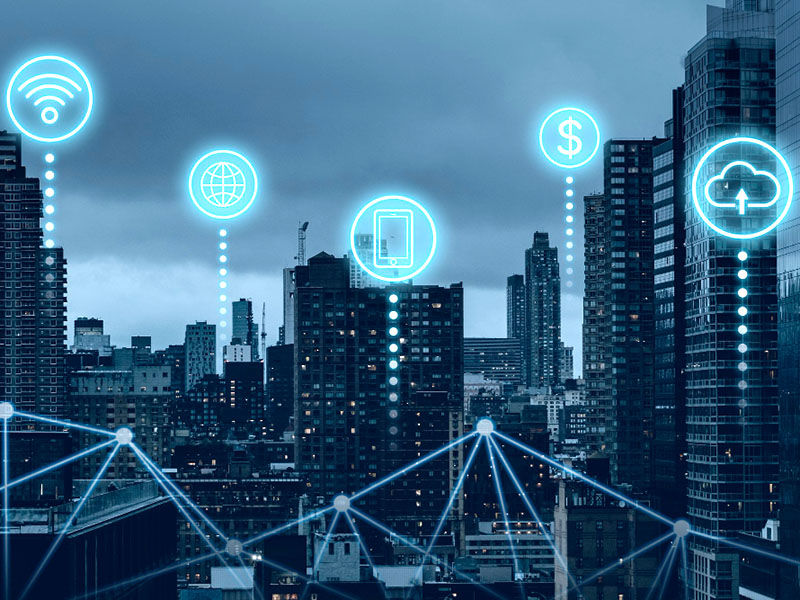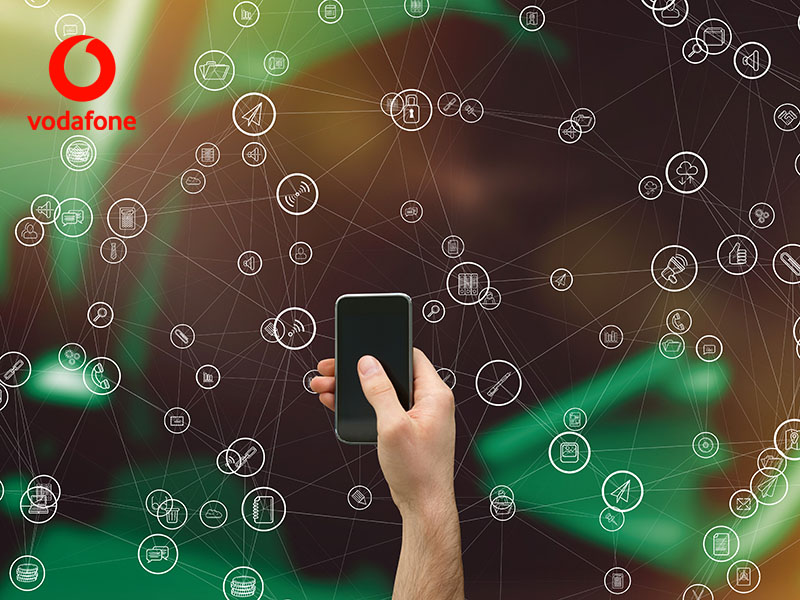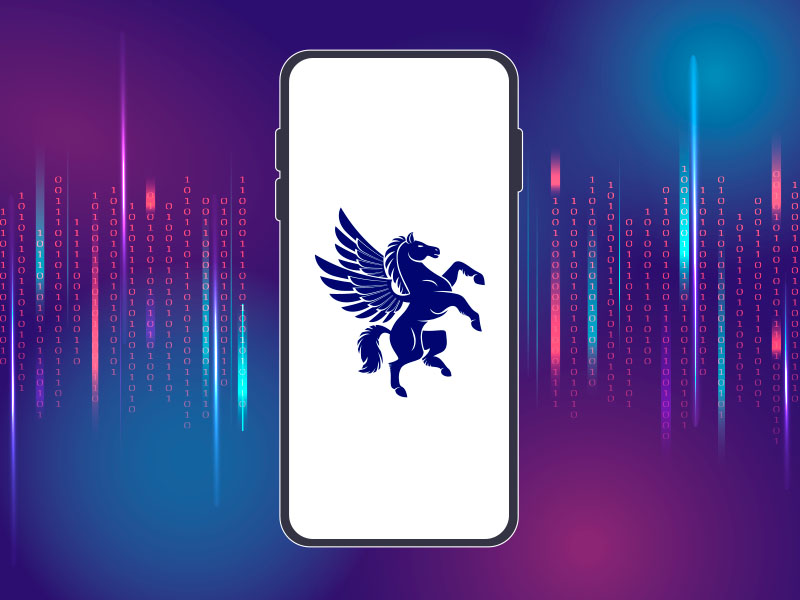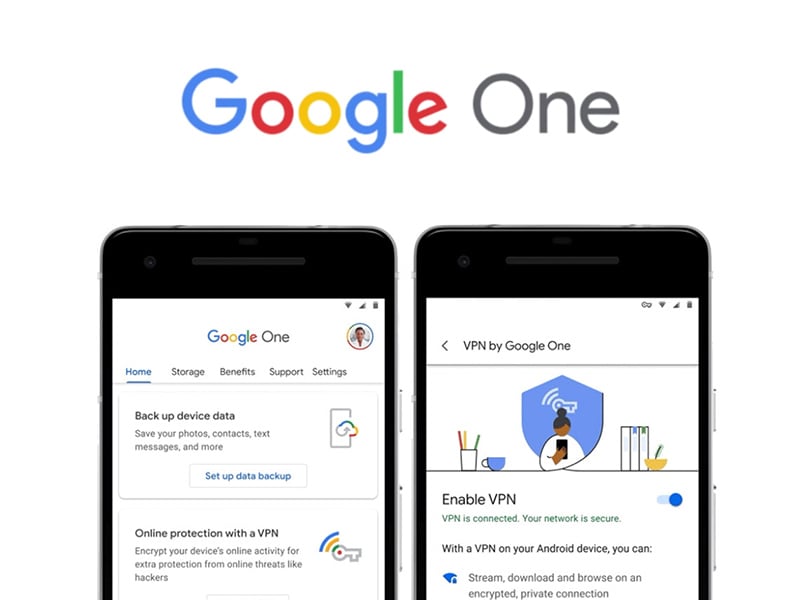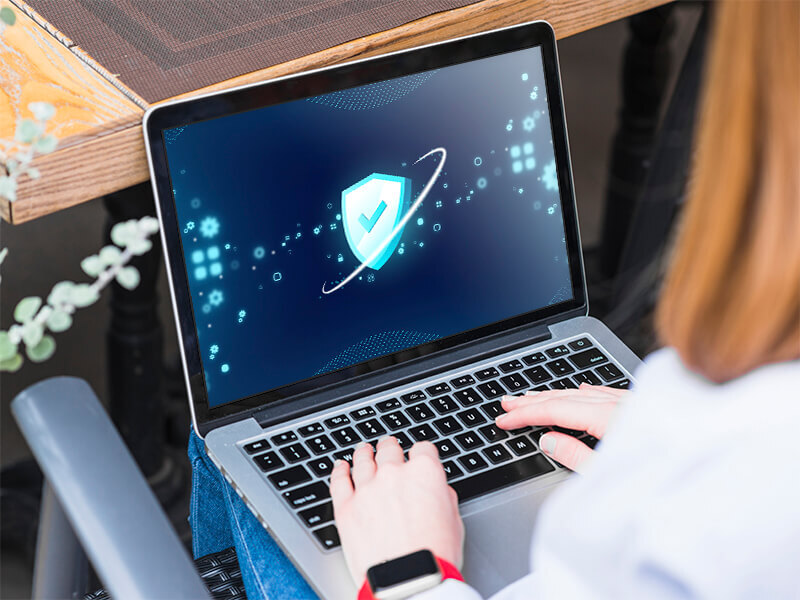Republica Móvil
Republica MóvilThe operator that rewards you for spreading the word about its services
[ ... ]WiFi Security: Assessment of threats in wireless networks
08/03/2024Wifi connectivity has gone from being limited to restricted environments to becoming omnipresent in virtually every aspect of our daily lives. The ability to connect to the Internet from anywhere, be it at home, in a café, at work, in public spaces, or even in-flight, has enhanced the convenience in our daily lives. Moreover, the expansion of Wifi networks and the use of new manufacturing technologies now allow the interconnection of devices, leading to the significant rise of the Internet of Things (IoT) and providing users with more comprehensive control over their digital environments. However, this proliferation of Wifi networks has also given rise to new threats that require careful evaluation and effective security strategies to ensure secure and risk-free Wifi connections for our data and information. Common Wifi security threats include data interception Man-in-the-Middle (MITM) attacks One of the fundamental challenges in Wifi security is preventing MITM attacks, where an intruder inserts themselves into the communication between two parties, compromising the integrity and confidentiality of sensitive data such as passwords and financial information. Spoofing of access points Hackers can create fake Wifi networks that mimic legitimate ones to attract unsuspecting users. Once connected to these malicious networks, our data can be captured by cybercriminals who may sell or misuse it for illicit purposes. Tips for achieving a secure Wifi connection: Strengthen authentication and use security protocols Prioritize strong encryption for networks to protect confidential information transmitted through it. WPA (Wifi Protected Access) encryption uses stronger algorithms than its predecessor, WEP (Wired Equivalent Privacy), making it more difficult for hackers to intercept and decipher data. Advanced security protocols like WPA3 provide individualized data encryption and advanced two-factor authentication (2FA) methods, adding an extra layer of security by requiring additional verification. Device management Properly manage and monitor devices connected to Wifi networks to minimize risks associated with the large number of connected devices in homes and businesses. Regularly update the router firmware and all connected devices to address potential vulnerabilities. Segmentation of the network to separate critical devices from less secure ones also helps mitigate the risk of threat propagation. Secure Router Configuration The router secure configuration is what will ensure the robustness and overall security of a wireless network. The router, being the first point of contact for devices connected to the Internet, acts as the first line of defence against potential attacks. For this reason, it is important to understand that the proper configuration of the router not only guarantees a stable and efficient connection but also establishes a protected environment that safeguards the integrity and privacy of our data. How to configure the router securely? To ensure a correct and secure configuration of the router, it is recommended to: Change the default username and password of the router, as these are easily accessible to attackers. Use strong passwords containing a combination of letters, numbers, and special characters. Disable remote administration to prevent cybercriminals from accessing the router externally. Enable WPA2 or WPA3 encryption instead of the outdated WEP for enhanced network security. Optionally, disable SSID broadcast to make the network less visible and harder to detect by hackers. Keep the router firmware updated to address vulnerabilities and improve overall device security. By following these steps, you will strengthen the security of your wireless network and reduce the chances of experiencing unwanted attacks or intrusions.
[ ... ]How to change the IP address?
How to change the IP address? We will explain step by step how to change your IP to be able to browse safely and anonymously on the Internet. The Internet is like a great highway and to "drive" on it, we must get on the road equipped with a computer, tablet, smartphone... with a license plate. This "license plate" is what is known as IP address and for many and several reasons, but mainly for security and/or privacy reasons, we may be interested in changing it. What is my IP? In order not to put the cart before the horse the first thing we must do to know how to change the IP of the computer is to find out what the IP of our connection is and verify that the change has been made correctly at the end of the process. Finding out what your IP is is as simple as visiting Cuál es mi IP (What is my IP). By accessing the page, without the need to download or run any program, our tool will automatically display your IP address data on the screen. This address is also useful to know if you want, for example, to configure online services such as servers, FTP, games, ... and it consists of a numerical combination. This address is unique and public and is the one that identifies us on the Internet to the websites we visit and other users. Nobody can browse the net without an IP address. The IP is assigned to us by our Internet Service Provider (ISP) and as this address is exposed on the network it is known as public IP, as opposed to the private IP of our local network, which only we can know. What is my public IP and what is my private IP? How important are they to change my IP? Our computer or any other device connected to the Internet has two IP addresses, a public IP address, and a private IP address. The public IP, as we have seen, is the one that identifies us to be able to surf the Internet (imagine driving on a highway without a license plate... we would be stopped and banned from driving!) This public IP is linked to our connection and, therefore, all devices connected to the same router have the same public IP. On the other hand, the private IP is the one that individually identifies each device in our private or home network. In this local network, each computer has a private IP address that serves to differentiate it from the rest of the computers and devices connected to the router. In this way, any request for data that comes from or is sent to a device is identified by the router so that it collects or sends the corresponding data to that device. So, which IP address should I change? Private IPs are not accessible from the Internet, while public IPs are and allow us to track our location, data, and Internet activity, including the pages we have visited or the time we have spent on each of them. So, to improve our security and privacy on the Internet, we can change the public IP, or if we prefer, hide our IP. Doing so is not complicated and now we will explain how to change the IP, but first, you must make sure if your IP address is a dynamic IP or a static one, as it depends on it that you can manage to change the IP on your own or require the intervention of your Internet Service Provider (ISP). How do I check if my IP is dynamic or static before changing it? IP addresses can be static or dynamic. In both cases, these addresses are assigned by our Internet provider and the difference between them is that in the case of the static IP, IP addresses can be static or dynamic. In both cases, these addresses are assigned by our Internet provider and the difference between one address and the other is that in the case of the static IP, the address assigned is permanent for a device or router, while the dynamic IP changes every time that device or router connects to the Internet. Usually, the IP address is dynamic, but you can check it through our free tool to find out what is your IP address on our website. Remember that you do not need to download any program or run any application. Simply access cualesmiip.com and the home page will show your IP address, indicating whether it is a static or dynamic one. If it is a static IP address, you will have to contact your Internet Service Provider (ISP) and request the change or use a VPN service as we will explain below. But if it is a dynamic IP address, the change is easy and you have several alternatives for doing so. How do I change my public IP? The easiest way to change the IP address if it is a dynamic one is to turn the router off and on again. This will change the public IP and when you browse again you will do it with a different IP address than the one you had before turning it off. The tricky part of the situation is that the new address, like the previous one, will continue to be exposed on the network and if you want to change it again you will have to turn the router off and on each time. However, it may happen that despite doing so, this does not work and the IP address does not change. This happens because in certain circumstances Internet Service Providers (ISP) establish a certain period before which IP addresses cannot be changed. How to change my IP with a VPN? If you are looking for a solution that does not force you to be aware of turning your router on or off and that also offers a permanent solution that contributes to your online security and privacy, VPNs are already the most effective solution for changing your IP. VPNs are services designed to hide the IP address, whether you connect with a static IP address or a dynamic one, using that of an intermediate server, in such a way that the IP address is masked, appearing to the public as a different IP permanently. As this new Public IP belongs to the VPN server, none of our data is exposed and whoever traces the address will only reach that server, without being able to access any data about our connection, navigation, and identity on the network. VPN vs Proxy Proxy servers act in a similar way, although VPNs have the added advantage that they encrypt all data from the beginning to the end of the communication so that the impossibility of tracing data is 100% guaranteed. Proxy servers do not have this function and therefore your connection may still be susceptible to falling prey to cybercriminals. In addition, most proxy servers, unlike VPNs, must be configured manually and even, in some cases, individually in each browser. How do I know if my IP has been changed? And now that you know how to change the IP, you can test and check whether it went well by comparing your new IP address with the one you had before. If everything went well, you will see that the numbering is different and therefore your IP has been changed.
[ ... ]Where to watch the Champions League on TV or Streaming?
13/06/2023Find out where you can watch the Champions League so as not to miss a minute of this excellent competition that this year again promises good soccer and maximum excitement. When does the Champions League 2021/2022 start? The UEFA Champions League Group Stage starts in mid-September. The first match day will be played on Tuesday, September 14, and will feature Sevilla, who will face RB Salzburg in the Andalusian capital; Villarreal, who will play at home against Atalanta; and FC Barcelona, who will face Bayern Munich, also at home. The following day, on September 15, the 2021/2022 Champions League will kick off for Atlético de Madrid, who will play against Porto at the Wanda Metropolitano, and also for Real Madrid, who will play their first match against Inter, in Milan. This first Group Stage will have six matchdays in which the 32 teams participating in this edition of the Champions League will face each other in home and away matches that you will be able to follow both on television and streaming. Group stage September 14/15, 2021: first matchday September 28/29, 2021: second matchday October 19/20, 2021: third matchday 2/3 November 2021: fourth matchday November 23/24, 2021: fifth matchday December 7/8, 2021: sixth matchday Once the six matchdays of the group stage have been completed, the competition will continue with the knockout phase, which will determine the two teams that will play in the UEFA Champions League final. Knockout Phase Round of 16: February 15/16/22/23 and March 8/9/15/16/16, 2022 Quarter-finals: 5/6 and 12/13 April 2022 Semifinals: May 26/27 and 3/4, 2022 Where to watch the Champions League on TV? As with LaLiga Santander and Liga SmartBank, Movistar has exclusive rights to the UEFA Champions League in Spain until 2024. However, following an agreement with Orange, Movistar has decided to share the rights with this operator, so that in Spain this season the Champions League can be watched on TV on Movistar and Orange TV. In both cases, the broadcasting of the UEFA Champions League group stage matches as well as those of the knockout phase and the Final will be included. How to watch the Champions League on Orange TV? Although Orange does not have direct rights to the Champions League in Spain, its agreement with Movistar allows its customers to watch live Champions League matches on Orange TV. These broadcasts are exclusively for the operator's customers who have the Orange Love Total package, which includes the UEFA Champions League, Liga Santander, and Liga SmartBank matches, in addition to the UEFA Champions League. How to watch the Champions League on Movistar? To watch the Champions League on Movistar we must be customers of this operator and have contracted the Fusión Selección Champions or Fusión Selección Plus con Fútbol package, which also includes the Liga Santander and Liga SmartBank matches. If our package is Fusión Selección con LaLiga, we will only have access to the Spanish football competition and we will not be able to watch the Champions League matches. The Movistar channel on which the Champions League can be watched is called " Movistar Liga de Campeones". "Movistar Liga de Campeones" is an exclusive TV channel for watching soccer and in addition to the UEFA Champions League, it also provides coverage of the Europa League.The schedules of all broadcasts can be consulted in the Sports section of the Movistar+ menu, for ADSL and Fiber TV customers. Where can I watch the Champions League live on the Internet? Both Movistar and Orange complete their Champions League soccer offer on TV through their online platforms. In both cases, to enjoy soccer on our mobile devices or computer, we must be subscribed to a package that includes the UEFA Champions League (in Movistar, Fusión Selección Champions or Fusión Selección Plus con Fútbol, and in Orange TV, Love Total). If you are a Movistar customer and have one of these packages, you must activate Movistar+ on your devices (formerly Yomvi) and you will have access to watch the Champions League online matches on Movistar as well as other online content and series, at no additional cost from anywhere and on any device. All broadcast schedules can be consulted in the Sports section of the Movistar+ menu on any device. To watch the Champions League online on Orange, you must log in to the Orange TV website to identify yourself as a Love Total member. Once we have logged in, we will be able to watch live matches of the UEFA Champions League, LaLiga Santander, LaLiga SmartBank, and also watch matches that have already taken place. Where can I watch the Champions League from outside Spain? If you are a Movistar or Orange customer, the best option to watch the Champions League from abroad is through Movistar+ on your devices or the online platform of Orange TV. If you have problems viewing the matches due to a geographical block, the best option, in this case, is to connect to a VPN with a Spanish IP beforehand. If your Internet access provider does not offer this service, here are the best VPN offers to surf safely (both from home and when traveling). In addition, and depending on the country you are in, various television stations and operators have the broadcasting rights to the UEFA Champions League: Europe Albania: Tring, RTSH Armenia: Vivaro Austria: ServusTV, Sky Austria Azerbaijan: CBC Sport, Saran Belarus: UEFA.tv Belgium: Proximus, RTL, VTM Bosnia and Herzegovina: Arena Sport Bulgaria: A1, bTV Croatia: HRT, Arena Sport Cyprus: CYTA Czech Republic: Nova, Voyo Denmark: NENT Group Estonia: Viaplay Finland: MTV France: Canal+, BeIN Georgia: Adjara, Silknet Germany, DAZN Greece: MEGA, COSMOTE TV Hungary: Sport1, MTVA Iceland: Viaplay, Syn Republic of Ireland: Livescore, Virgin Media, RTE Israel: The Sports Channel Italy: Amazon, Mediaset, Sky Italia Kazakhstan: QazSport, Q Sport League, Saran Kosovo: Arena Sport, Artmotion Kyrgyzstan: Saran, Q Sport Latvia: Viaplay Lithuania: Viaplay Luxembourg: RTL, Proximus Malta: Melita, PBS Moldova: Setanta, Prime Montenegro: Arena Sport Netherlands: RTL, Ziggo Sport North Macedonia: Makedonski Telekom, Arena Sport, MTV Norway: TV2 Norway Poland: Polsat Portugal:Eleven Romenia: Clever Media, Digisport, Telekom Romania Russia: Match TV Serbia: Arena Sport Slovakia: Markiza, Voyo Slovenia: Sportklub, Pro Plus Spain: Telefonica, Orange TV Sweden: Telia Switzerland: blue+, CH Media Tajikistan: Varzish TV, Saran Turkey: EXXEN Turkmenistan: Saran Ukraine: Megogo UK: BT Sport Uzbekistan: MTRK Africa and Middle East Nigeria: SuperSport South Africa: SuperSport Middle East and North Africa (Algeria, Bahrain, Chad, Djibouti, Egypt, Iran, Iraq, Jordan, Kuwait, Lebanon, Libya, Morocco, Oman, Qatar, Saudi Arabia, Sudan, Syria, Tunisia, United Arab Emirates, Yemen): beIN Sub-Saharian Africa: Canal+, SuperSport America Bolivia: Televideo Brazil: SBT, Turner Canada: DAZN Caribbean: Flow Sports, Sportsmax Central America: ESPN Costa Rica: Teletica Dominican Republic: Televideo Ecuador: Televideo El Salvador:Canal Dos Guatemala: Televideo Haití: Canal+ Honduras: Televicentro South America (except Brazil): ESPN Mexico: Turner Panama: TVN, Medcom Paraguay: Televideo Peru: Televideo United States: CBS, TUDN Deportes Venezuela: La Tele Tuya Asia and Pacífic Australia: STAN Brunei: beIn Cambodia: beIn China PR: PPTV, Tencent, iQIYI, Alibaba Hong Kong SAR: beIn India and Indian subcontinent: Sony Indonesia: SCTV Japan: Wowow Republic of Korea: SPO TV Laos: beIn Macau SAR: TDM Malaysia: beIn Mongolia: SPS Myanmar: TBA New Zealand: Spark Pacific Islands: Digicel Philipines: Tap TV Singapore: beIn Taiwan/Chines Taipei: Elta Thailand: beIn Vietnam: FPT Moreover, if you are one of those who can't miss a single live match, you should know that the Sport24 platform has the rights to broadcast Champions League matches on airplanes and cruise ships. Where to watch the final match of the Champions League 2021/2022? The 2021/2022 Champions League final will be held at the Gazprom Arena in St. Petersburg, Russia, on May 28, 2022. Like the rest of the competition, you can watch the Champions League final on TV through Movistar-Movistar Liga de Campeones dial 50 and Orange TV. Where to watch the Champions League 2021/2022 final on the Internet? In addition to television, you can also watch the Champions League final online. In this case, you must also be a Movistar or Orange customer and connect to Movistar+ on devices (former Yomvi) in the first case or to the online platform of Orange TV, if you are an Orange customer to enjoy the match in which the best European soccer team 2021/2022 will be proclaimed. How can I watch LaLiga soccer matches from abroad? If you have already contracted a television service with the LaLiga package and due to a geographic blocking of your television provider and your connection you have problems viewing the matches, the best option, in this case, will be to use a VPN that assigns you an associated IP that is not blocked. If your Internet access provider does not offer this service, below are the best VPN offers to surf safely from anywhere.
[ ... ]How can I hide my IP?
Accessing the Internet involves connecting our computer, smartphone, tablet, etc. to a communications server that is responsible for providing access to the network. This connection involves the identification and exchange of data about our identity, IP address, and online activities that are recorded forever as a trace of our navigation. Can I be tracked through my IP address? Yes, it is possible to trace an IP address and for those who consider privacy a priority, this is a major problem because, in addition to being exposed throughout the network, the increasingly intensive use of the Internet has led to this type of data becoming an object of interest for cybercriminals seeking personal or confidential information that can be used for their benefit. To safeguard against all this, there are several methods to hide the IP address, ensure our online privacy, improve our security on the Internet, and prevent anyone from knowing what pages we visit, the time we have spent on every connection, or what we are downloading. What are the advantages of hiding my IP? Apart from everything related to privacy and security already mentioned, hiding the IP offers different advantages for users in multiple circumstances: There are IP hiding services that prevent IP geolocation when we travel and allow us to connect to the network as if we were doing it from our own country, overcoming, for example, any network access limitations that may exist in the place where we are. We will be able to download files anonymously avoiding that the rest of the users can see our IP location. If our IP is not "in sight", the possible limitations and blockages of the Wi-Fi network and even of our ISP (Internet Service Provider) disappear. Thanks to the data encryption system of the most advanced IP hiding services, our vulnerability in connections to public Wi-Fi networks is minimized. When the system detects a location different from the real one, this can give us advantages to buy in online stores with different offers according to the country or to avoid the blocking of games, maps, and online game add-ons that may have restrictions on our location. How can I hide my IP? IP hiding is achieved through the use of specific services and tools to hide the IP and encrypt our traffic, those services allow us to hide the real communications we make during our navigation. Besides those techniques that are based on the modification of network protocols and require certain skills to carry them out, there are several technologies within the reach of all users: VPN or Virtual Private Network Proxy or Web proxy Tor Public Wifi How to hide the IP address with a VPN? VPNs are services that connect us to the Internet through intermediate servers, in which our original IP address is " masked " by the IP address of that secure server. This concealment ensures that anyone tracing our connection will only see the IP address and location of the VPN server, but not our own. In addition, to safeguard our activity on the network, VPNs use tunneling and data encryption, encrypting the information we exchange with the VPN server, hiding it, and preventing third parties from being able to read it during its transit. The security of VPN connections is determined by proprietary VPN protocols, based on different standards and encryption and authentication methods, which depend on each developer. The range of options is wide and this allows us to choose between, for example, options that prioritize speed over security, options that do the opposite, options with a greater or lesser degree of reliability, etc. VPN applications always run in the background and do not hinder browsing. How to use a proxy server to hide the IP address? Unlike VPN services, proxy servers focus their activity solely on hiding the IP, without performing any type of concealment on our network traffic or any other data that could reveal our identity. Proxy servers act as intermediaries between our device and the destination server to which they transmit our requests on our behalf. Therefore, our IP will be hidden and the only one they will see will be the proxy one. There are different types of proxy services, from the simplest ones that only help us to hide the IP to others with extra functionalities such as blocking cookies, scripts, and other files hosted on websites and sent to the user. Browsers or applications based on the HTTP protocol offer the manual proxy configuration function so that we can indicate the proxy web address and port to which we want to connect before browsing. In this way, any activity that we perform through that browser will always be routed to the proxy. Alternatively, you can also opt for the automatic proxy format that searches through DNS or DHCP for the URL from which to download the wpad.dat file that runs and allows the proxy connection with automatic authentication on your computer. How to hide your IP with Tor? Tor is a free software developed to ensure anonymous browsing of users on the Internet. To mask the IP Tor uses a network of volunteer computers or nodes through which it redirects our traffic and encrypts it before it reaches its destination. At least this redirection goes through three of these nodes, achieving repetitive re-encryptions so that any possible clue about our identity disappears. In this process, Tor assigns a random and geographically different IP to our connection so that the location by third parties is impossible (if you are curious to know the IP you have been assigned you can check it through our tool). This system allows different configurations depending on whether we are using a firewall, if our ISP is blocking Tor connections or if we navigate through proxy for example. Can I hide my IP with a public Wi-Fi connection? The answer is yes. A public Wi-Fi network can also be used to hide our IP address, although if we do not have it constantly at our disposal, the IP hiding is limited to the time we have access to a public network. As this type of network is a connection shared by many other people, this makes it impossible to trace a particular user or identify them on the destination server. However, it is precisely this general access that also makes us more vulnerable. And although through a connection to a public Wi-Fi we will solve the issue of IP hiding, security will never be total, because being an open network, we can be exposed to the will of hackers and other threats, including malware and viruses. And if I want to hide my IP address, how can I change it? It may also be the case that instead of masking the IP all we need to do is change our IP address at a given moment. Then, the solution is as simple as disconnecting the modem from the power supply and restarting it after a few minutes. In that time, if your IP address is dynamic (you can check it through the network connections tab on your computer), it will be deleted and your Internet provider will give you a new one. To make sure that everything went well, we recommend doing something as simple as writing down the IP address before turning off the router and checking it again once it is up and running again. Another possible way to achieve the same result if you have a smartphone with a data plan is to turn this device into a wireless access point to which you can connect your computer, thus hiding your usual connection. There are many options to hide the IP or to change it and now that you know how each of them works you will be able to decide which one suits you best.
[ ... ]Google incorporates Artificial Intelligence into its search results
05/06/2023During Google's annual developer conference, Google I/O, the company has publicly announced its commitment to Artificial Intelligence to improve its search results. Similarly, Google will introduce the generative AI collaboration tool, Duet AI, in Cloud and Workspace. The objective in this case is to assist in programming and generating personalized content in services like Gmail, Slides, or Meet. Google has opened generative AI support in Vertex AI and has also announced the Text Embeddings API for applications that require semantic understanding of text or images. At the developer conference, Google's Vice President and General Manager of Search, Elizabeth Reid, gave a live demonstration of how they are applying Artificial Intelligence in their search engine. The AI results will be displayed in a box at the top of the page with links to verify the provided information. Below the box, the rest of the results will be listed as usual, although Reid also mentioned that thanks to AI, they will now be more relevant.
[ ... ]Ip Location, the tool to know my ip location
If you need to check what location your internet provider is sharing with the websites you visit, with our IP locator you can instantly geolocate your IP address or any other that you enter manually. To geographically locate the IP address, you only need to be connected to the internet. If you use VPN software or connect through a proxy to locate IP address you can also use our tool. None of the data generated by the IP locator is stored in our system. @Mapa@ How can I hide my IP address so that it cannot be traced? To anonymously browse the Internet and avoid being located through the IP of your connection, there are two basic ways to do it. The first is to hide IP so that no one will be able to track our presence on the network or access our browsing data and the second is to change IP and browse through another IP address whenever we need to. Why do I need to locate my IP geographically? Locating your IP geographically is the best way to find out what data our ISP shares about the location of our connection. Depending on this location. a website whose URL is ".com" will change to "/es" if we connect from Spain, for example, and some tasks related to the sending of forms will be simplified, as they will be automatically pre-filled with some data such as your country or city, depending on your geolocation IP. As users with a geolocation IP tool such as the one we offer in Cuál es mi IP, we can manually enter an IP address and find out, for example, from where we have received a fraudulent email, if we have had access before, of course, to the IP address involved Can anyone find out my home address with an IP geolocation tool? By using a tool to locate an IP address, you can trace the IP and geolocate it through coordinates on the map, but the specific postal address is never provided. This is because our IP address is not ours, but rather our Internet Service Provider's (ISP's). So what data can they find out about me with IP geolocation? When locating the IP geographically. the only information about us that is provided is the country and city from which we are connecting, since the GPS coordinates of altitude and latitude that are shown correspond, in reality, to those of the headquarters of the company that is offering us the Internet connection service. The reason behind this is that all data related to the actual geographic address of the device used to access the Internet, i.e. our router, is not public and belongs to our ISP, which can only disclose it by court order. Why are companies interested in locating my IP address geographically? Information is power and for a company to know from where its potential customers connect is an important advantage to design marketing strategies aimed at the customer profile of a particular geographical area or country. In addition, in terms of anti-fraud, e-commerce companies can improve card payment security by identifying payment attempts from suspicious IP addresses. What is an IP address? An IP address is a special numerical combination assigned to an internet-connected device to be identified on the network. All intelligent devices need an IP address to access the Internet and interact on the network. Each device connected to the Internet has its own an individual IP address. When we access the Internet, the servers recognize our device through its IP address, allowing the two-way communication with the recipient. As we are identified with our IP address, the rest of devices can order a return response, without mistake the sender. Making a simile, an IP address would be the address that we use to write on the back of an envelope. This information identifies us as issuers and also as recipients of the return answer. To make possible this data exchange, the IP protocol was established as a set of universal rules for all the Internet operations. That means that all devices connected to Internet or to a home network, "speak" the same language and they are able to communicate each with the others. There are two types of IP address, the external IP and the local IP: • The external IP or public IP is the numerical combination address assigned to us by our Internet service provider (ISP). This public IP identifies us as Internet users when we are connected. If you want to find the IP of your computer, your tablet or your Smartphone, you can find out this immediately by accessing the home page of “What is my IP” or using our speed test service that, in addition to this information, will inform you about the quality of your Internet connection. • The local IP address or internal IP is the one the router assign to all the devices connected to him and identifies each of these devices, individually, in the home network. How to locate an IP address? If you want to know how to find out where an IP address is from, you should know that it is not always easy to find out the IP origin of a connection, because there are different systems to hide the IP. Some users use these systems for security reasons or to simulate, for example, their IP location in another place and thus have access to Internet services not enabled in the place where they are located. Now, if the user does not use any resource to mask the IP, find out the IP of the computer or any other device connected, for example, to our website, it is as simple as use IP geolocation services such the one offered in “What is my IP?” and you will immediately find out the IP origin of any computer that you are interested in track. Knowing the IP location of our clients is an advantage when we are designing, for example, our marketing strategies and a good tool, also, to improve network security, as it allows us to locate suspicious IP addresses. In addition, with the IP geolocation service you can also verify the location that your Internet provider shares about you. It should be clarified that this location provided by IP geolocation services is never the specific address of our home or where we are located. The data actually are from the operator node in our area that is offering us the connection service to the internet network Therefore, the geolocation information will be the country and city from where the connection is made, but not the address where the user is located, because this specific tracking of the user address is protected by law and this data can only be provided by court order.
[ ... ]Vodafone tests a new technology to identify the activity of their users on Internet
03/06/2022Vodafone has begin to test a new way of tracking the activity of their users on the network. This is an advertising identification system called TrustPid, which works by creating a fixed ID for each customer at the Internet Service Provider (ISP) level. After that, this ID will associates all user activity with it. The objective is to use the data obtained for the distribution of publicity and personalized advertising and to prevent publishers from losing revenue. According to the company, there is no way to circumvent the system at the browser level, blocking cookies or masking the IP address and they assure that it is a simple toll if people want to continue consuming high-quality content on the Internet without paying. “Consumers appreciate the idea of the free internet, but this needs a trade-off: publishers need a sustainable revenue model, which means adding subscription paywalls or relying on advertising to keep free access and ensure high-quality content”, they justify. At the moment, Vodafone is testing advertising identification in Germany with some of the country's largest websites, Bild.de and Deutsche Telekom, the parent company of T-Mobile.
[ ... ]
Privacy Policy
Esta política de privacidad aplica a todos los contenidos de este sitio web y que sean publicados por Dommia Design Studio. Si usted tiene alguna consulta sobre cómo usamos su información personal, por favor contacte con nuestro responsable de privacidad en [email protected]. Según lo establecido en el RGPD (Reglamento (UE) 2016/679), les proporcionamos la Información Detallada de Protección de Datos que se expone a continuación: Responsable: Dommia Design StudioRazón Social: Dommia Design Studio SLC.I.F.: B-66440581Dirección: c/ Lepant, 326, Entlo, Desp 3 - 08025 - BarcelonaTeléfono: 936 241 455Correo Electrónico: [email protected] Inscrita en el Registro Mercantil de Barcelona Tomo: 44619, Folio: 176, Hoja: 461387, Inscripción: 1 Información que recopilamos y con qué objetivo Esta sección detalla la información que podemos recoger sobre usted. Explicamos por qué y cómo lo utilizamos en secciones posteriores. Información que obtenemos a través de cookies y herramientas similares Utilizamos cookies (y tecnologías similares) y herramientas de análisis en nuestros sitios para recopilar información sobre usted. Esta información se puede utilizar para mejorar el rendimiento del sitio y mejorar la experiencia de usuario. Proporcionamos información detallada sobre cookies y tecnologías similares dentro de nuestra Política de Privacidad; algunos ejemplos incluyen: Su ubicación: utilizamos cookies para mostrar información del lugar más relevante para su ubicación. Su uso: utilizamos cookies para entender como nuestros clientes utilizan nuestros sitios. El dispositivo: utilizamos cookies para entender el tipo de dispositivo que está utilizando para mostrarle la mejor versión del sitio. Si desea administrar sus cookies, siga las instrucciones de la sección "Cómo gestionar las cookies" dentro de nuestra Política de Privacidad. Información que obtenemos a través del formulario de contacto Datos de contacto: nombre y correo electrónico. Web Beacons Utilizamos web beacon en nuestras páginas web y nuestros correos electrónicos. Cuando enviamos correos electrónicos a los miembros del boletín de noticias, podemos hacer un seguimiento del comportamiento como quien abrió los correos electrónicos y quien hizo clic en los enlaces. Esto nos permite medir el rendimiento de nuestras campañas de correo electrónico y mejorar nuestras características para determinados segmentos de miembros. Fundamentos legales para el procesamiento Solo tratamos información personal cuando tenemos su consentimiento de usuario: es decir, cuando nos ha dado permiso explícito para procesar información personal para un fin determinado. Por ejemplo, si completa uno de nuestros formularios de comunicación, le solicitaremos su consentimiento si quisiéramos utilizar su información personal para cualquier otro propósito. Usted tiene el derecho de retirar este consentimiento en cualquier momento. Puede administrar sus preferencias contactando con nuestro Delegado de Protección de Datos en [email protected]. ¿Cómo utilizamos su información personal? Recopilamos información personal por una razón principal, para mejorar y mantener el rendimiento de nuestro sitio web y poder brindarle la mejor experiencia de usuario posible. Recopilamos información personal por dos motivos principales: Mejorar y mantener el rendimiento: para proporcionarle la mejor experiencia de usuario posible, debemos asegurarnos de que nuestros productos y servicios funcionan como deberían ser. Comunicar cambios y ofertas de productos: queremos que obtenga el máximo rendimiento de nuestros productos o servicios, incluyendo mostrar nuestros últimos contenidos y boletines informativos. Puede cambiar sus preferencias en cualquier momento contactando a nuestro oficial de privacidad a [email protected]. ¿Con quién compartimos su información personal? No divulgamos su información personal a ningún tercero a menos que lo exijan las leyes aplicables, órdenes judiciales u otros procesos legales válidos. ¿Cuánto tiempo conservamos su información personal? Un resumen de la duración de su información personal: Categoría de datosEjemploPeríodo RetenciónJustificación del Período Comercial Clientes Hasta 5 años después de la resolución de cualquier relación comercial Para informar de nuestros productos y servicios Comercial Formulario de contacto Hasta 5 años después de la resolución de cualquier relación comercial Para informar de las peticiones realizadas por el usuario Marketing Newsletter Hasta que exprese su negativa a que sea enviada Para informar de nuestros productos y servicios Los datos se almacenarán el tiempo estrictamente necesario exclusivamente para el desempeño de sus competencias legalmente establecidas. A veces es necesario que guardemos su información personal por períodos más largos, por ejemplo: Si existe un requisito legal para retenerlo; Si requerimos la información por razones legales o existe una necesidad legítima para que la retengamos; Para garantizar que no nos comuniquemos con usted si nos ha pedido que no lo hagamos. ¿Cómo mantenemos su información personal segura? Contamos con las medidas de seguridad técnicas y organizativas adecuadas para garantizar que la información de nuestros usuarios esté protegida contra el acceso, uso, alteración o pérdida no autorizados o accidentales. Sus derechos Según las leyes de protección de datos, tiene derechos en relación con sus datos personales que gestionamos. Estos derechos incluyen: El derecho de oposición al márquetin directo; El derecho de acceso a los datos personales que procesamos sobre usted; El derecho a solicitar la eliminación de sus datos personales; El derecho a solicitar la rectificación de sus datos personales. Puede ejercer estos derechos contactando a nuestro oficial de Privacidad en [email protected]. ¿Dónde se aplica esta política de privacidad? La información personal recopilada por el CLIENTE. Nuestro sitio web puede contener enlaces a sitios web de terceros que no están sujetos a esta política de privacidad. No somos responsables de su contenido, uso de información personal o prácticas de seguridad. Si tiene una consulta sobre el tratamiento de su información personal, comuníquese con nuestro oficial de Privacidad en [email protected]. Cambios en esta política de privacidad Esta política es efectiva desde el 24/05/2018. Cualquier cambio que hagamos a esta política de privacidad se publicará en esta página, explicitando la fecha del último cambio.
[ ... ]How to know if Pegasus has infected our mobile
05/05/2022The news of recent weeks, in which it is claimed that the Pegasus espionage program has been used to enter the mobile devices of Spanish politicians, has put a lot of people on alert. Pegasus is a malicious software that, once introduced on a device, has the ability to collect information and transmit it to an external entity without the consent or knowledge of the owner of the device, be it a mobile phone, a computer or a tablet. Pegasus also erases its trail after it is installed. Among its main features, it also stands out that Pegasus is capable of detecting who the owner of the device has been with. Pegasus also, can send and recive messages autonomously and recording conversations by manipulating the attacked mobile, computer or tablet. The two ways that this spy program uses to enter on a devices is through an SMS or a fraudulent link and, according to experts, despite the fact that it is a very difficult spyware to detect, there are some signs that can make us suspect that we have been infected. Overheating or slowdown of the system are two of the main ones, but also the fact that the battery life is decreasing or that there is excessive data consumption when we are not using the device. How to make it difficult for Pegasus To try to avoid being infected by Pegaus or by any other malware, the director of Systems Engineering at Fortinet from Spain and Portugal, José Luis Laguna, in statements collected by Europa Press, recommends taking extreme precautions and a make a double-checking when personal and confidential information is provided. In addition, the Fortinet expert explains that instead of clicking on the link that we have received, to verify that it is legitimate, it is recommended to write the address of the site in the web browser, even though this means taking an additional step and not accessing directly to this service. Using protection 'software' based on behavior - EndPoint Detection and Response (EDR) -, keeping the system updated, avoiding public Wi-Fi connections and checking the permissions granted to applications, are other precautions that are also recommended.
[ ... ]End-to-end encryption of Facebook Messenger and Instagram delayed until 2023
25/11/2021Security and privacy have become two of the main worries of the new virtual world. Meta, the new name of Mark Zuckerberg's company, has been working on end-to-end encryption system for Facebook Messenger and Instagram platforms and has just reported that finally this protection will not be ready until 2023. The delay, they explain, is due to their effort to ensure that end-to-end encryption will be the protection that all their messaging applications have by default, but at the moment only WhatsApp offers it. This technology means that only the sender and the receiver can know the content of a conversation. It's also known that end-to-end encryption has open the debate about privacy and collaboration with police investigations, specially in cases of child abuse. "As we implement end-to-end encryption, we will use a combination of unencrypted data in our applications, account information, and user reports to keep them secure in a way that protects privacy while assisting in public safety efforts" , has assured the Security director of Meta, Antigone Davis.
[ ... ]Google launches its very own VPN service in Spain
30/08/2021Google has just introduced its very own VPN service in Spain. This VPN is available through the Google One app. It aims to increase the online security of its customers and it is only available for Google One members on 2 TB plans or higher. Google's VPN service hides your IP address so that your online activity can't be tracked and protects your device against hackers when you're on an unsecured network, such as a public Wi-Fi network. However, unlike other VPNs, this one only works in Google's "supported countries" (Spain, Canada, France, Germany, Italy, Mexico, the United Kingdom, and the United States). At present, Google's VPN service is only available on Android devices. Nevertheless, on the VPN's site, Google notes that it plans to expand the service to iOS, Windows, and Mac in the near future.
[ ... ]Macro cyber-attack affects more than 350 companies worldwide
07/07/2021The number of companies that have suffered from the REvil macro cyberattack now exceeds 350 organizations worldwide from which the cybercriminals are demanding 70 million in bitcoins to provide them with a universal decryptor to restore their data. The attack was conducted through the update system of IT services software company Kaseya, which REvil exploited to spread and hide ransomware. The virus was leaked to TI Kaseya resellers and from there has reached all end customers using their software. The official data provided by TI Kaseya sets the number of affected companies at 350, although other sources such as the cybersecurity company ESET talk about more than 1,000, including some Spanish organizations, although no names have been disclosed. It has been made public that one of the companies most affected by the cyberattack has been the Swedish supermarket chain Coop, which has had to close its more than 800 points of sale for a few days due to the impossibility of using its cash registers or charging customers. Based on Sophos threat intelligence, REvil has been active in recent weeks and is currently the dominant ransomware gang involved in Sophos' defensively managed threat response cases. Prior to this latest attack, they were also responsible for the one suffered by meat company JBS, which forced the cancellation of all work shifts at the company's slaughterhouses in the US. JBS paid up to 11 million to restore normal operations. These macro cyber-attacks are in addition to other recent and highly significant ones, such as the one perpetrated by the hacker group DarkSide, which forced the preventive shutdown of the largest oil pipeline network in the United States, Colonial Pipeline, endangering the supply of fuel in a large part of the country, or the one suffered by the SEPE and the Ministry of Labor in Spain a few weeks ago.
[ ... ]How to keep your Mac safe?
28/06/20215 things you should do to protect your Mac How many times have we heard that Mac is a more than secure and unbreakable system? For years, Apple has made its security through obscurity, or in other words, its proprietary software, flagship and brand guarantee. Today, however, just when Mac is no longer a minority option, Steve Jobs' system has become another favorite target for hackers and cybercriminals. The market has responded to this with the development of specific protection tools for Mac, while Apple works on optimizing its system in each version. Knowing what kind of tools exist for Mac and which ones are already included in our computer will help us to stay safe and choose the best strategy that fits our needs and use of the equipment. 1. Use computer security tools Cybersecurity is a universal and necessary practice in all operating systems today. The objective is to ensure protection against attacks and theft by cybercriminals who are looking for personal or confidential information stored on our computers or that enters or leaves them, in order to use it for their own benefit. What is VPN security? Cybersecurity tools help us to minimize our footprint on the Internet and thus increase our privacy and security. In this regard, VPN services for Mac stand out, as they incorporate advanced protection technologies capable of connecting to the Internet through intermediate servers, so that our IP address - our identification on the network - is replaced by the IP address of this secure server, without anyone being able to trace our connection. This type of VPN service also encrypts any information leaving our computer, thus preventing it from being accessed on its journey to its destination. This is essential, for example, when using public Wi-Fi networks to connect to the Internet. 2. Keep the operating system and software up to date As simple as it may seem, one of the best and easiest ways to protect a Mac is to always have the latest version of the operating system installed and to work with updated software downloaded from the Mac App Store. System updates usually include security patches, among other things. How do I update my Mac? Through the System Preferences Panel of our computer we can set that when there are available updates we receive a notice from MacOs warning us of it or that these updates, whether system data files, security updates or official software are installed automatically. To check if we are working with the latest versions available and our Mac is up to date we can do it by checking through this same panel if there are updates available at that time. If we have checked the automatic updates option, Mac will do this task for us routinely. 3. Use secure settings Mac's default security settings can be greatly enhanced by manually configuring the security and privacy terms of our computer. How to change the Privacy and Security preferences on the Mac? By accessing the "Privacy" tab of the "Security and Privacy" option of the Control Panel we will have the option to manage what information we allow our computer to make available to others over the Internet or on a network and what applications we allow access to our data and files. In the same way, but through the "Security" tab, we will be able to incorporate passwords for the access to different tasks and operations of the computer and through the "FileVault" tool we will be able to ensure the encryption, for example, of our personal information or certain documents for which a password will be required to unblock them. 4. Use an Antivirus for Mac There are antivirus programs developed specifically for Mac. Some of them are special for certain threats, although in general most of them offer a wide range of services to help us keep our computers safe. Which is the best antivirus for Mac? The range of antivirus for Mac, free and paid, is nowadays much wider than a few years ago, highlighting among the most complete and advanced, antivirus with malware protection functions in real time, tools against digital identity theft, protection against spyware or advanced detection and removal of blackmail programs. 5. Make regular backups Apple has a native function, Time Machine, which makes backup copies of our hard disk on a separate secondary disk, so that if for any reason we suffer an attack or a breakdown we can recover all the information. Many antiviruses offer a backup service, backup or backup similar but in the cloud, as a preventive measure against writing errors on the disk, theft of devices or even against data hijacking or ransomware.
[ ... ]How to set up a digital marketing strategy?
16/06/2021As our daily life Internet gains prominence in our physical world, companies selling products and services are increasing their online presence. To do so, they resort to strategies and tactics that ensure their omnipresence in both worlds, with the main task of attracting and retaining customers who buy their products. In this race for customers' attention, strategies such as Inbound Marketing and Outbound Marketing have emerged as protagonists and although they are radically different in their forms, both techniques have found in online communication an ideal medium through which to achieve their goals. What is Inbound Marketing? Inbound Marketing is based on attracting customers through non-intrusive techniques that use content related to the needs and interests of our target audience to attract them to our brand and products. Inbound Marketing Strategy In Inbound Marketing, content is the king and the strategy to get the user to approach the brand is to create, through these contents, links with the customer and establish a relationship of trust and support that favors their interest in our products and services, as well as their loyalty. To achieve this attention on the contents, it is basic and essential to optimize the SEO search engine, which makes our website, our contents and brand visible, makes us relevant and also contributes to our authority. To achieve this optimization and positioning, SEO will be in charge of indicating which words are trending in searches related to our content, will improve the structure of the web to allow a correct user experience, will implement a good strategy of referral links or link building and will take care of other aspects such as the integration of CRM tools or user metrics. All this will make it possible for our content to be positioned and that in a totally "natural" way and without any intrusion, all those contents written according to the interests of a certain group of customers, awaken their interest and attract them to our brand. Inbound Marketing Tools Throughout the whole process of customer attraction and loyalty, the Inbound Marketing strategy has a wide variety of tools to achieve its goal: Blogs Landing page Lead Creation Calls to action Intelligent content Workflows, ... What is outbound Marketing? Unlike Inbound Marketing, outbound Marketing is based on a totally traditional commercial approach, in which the product or service being sold is the only protagonist of the communication. Outbound Marketing Strategy To reach the public, outbound strategies use invasive methods that address broad audiences, without a specific target, with the intention of reaching the maximum number of possible interested parties. Outbound Marketing strategies are based on one-way communication, from the brand to the customer. The company shows the value of its products and services and tries to convince the public to buy them. All this operation is implemented without the customer's request, even before he has made a search or has shown previous interest in a specific product or service. Outbound Marketing Tools In Outbound Marketing, since there is no specific target audience segment, the communication reaches many users, although it may not be of interest to any of them. To achieve this massive distribution, companies use resources such as: Pop-ups Advertisements inserted in videos Banners Email campaigns for which companies use powerful email marketing software in Spanish, with multiple integrated tools that allow from automating mass mailings to A/B testing, comprehensive monitoring of the actions of each recipient (open rate, clicks on links,...) or even advanced segmentation based on interactions and / or user behavior detected in previous actions. Newsletter, inbound or outbound marketing? Now that we know the differences between Inbound and Outbound Marketing, we will finish by looking at a very useful and versatile tool that, unlike those previously mentioned is used interchangeably by both strategies. We are referring to the Newsletters. If we look at the Newsletter of Which is my IP, for example, we would be talking about an Inbound strategy, because to receive the electronic newsletter you must first register (by the way, if you have not done so yet, do not miss it and you will receive timely information on news and updates to get the most out of your Internet connection). On the other hand, if we look at newsletters like the ones we have all surely received at some time, in which we are offered, for example, a telephone offer from a company that is not our own, we are dealing with an electronic newsletter included in the marketing plan of an Outbound strategy. At this point, we can only conclude that knowing our priorities as a company, analyzing the degree of knowledge we have about our target and assessing our objectives, we will have all the necessary answers to start working and designing our digital marketing strategy.
[ ... ]What is the value of a Bitcoin?
11/06/2021Since Bitcoin first appeared in 2009, this digital currency not issued by any government or company, nor, under the umbrella of any kind of economic policy, has gained a foothold in the market and has already started to fit into existing legal frameworks. What gives Bitcoin its value? The great value of Bitcoin is that it is a decentralized and global currency, an alternative to fiat currencies (those issued by governments). All transactions with Bitcoins are public and each of these crypto currencies belongs exclusively to its owner, therefore, it is a currency that cannot be intervened by anyone. What can I do with Bitcoins? To date, with this cryptocurrency, it is possible to monetize all kinds of services, in addition to making investments, free or practically free of commissions, which in the medium to long term are proving attractive. This has made Bitcoin an asset in which to invest and an increasingly popular means of payment through which to transfer value from one user to another without losing friction along the way, going through an intermediary or paying a commission. What is the price of a Bitcoin? Like any other good, the price of a Bitcoin varies according to market demand, although the fact that it has been designed to behave as a deflationary asset and that its supply is limited to 21 million coins, facilitates that by the law of supply and demand itself, the Bitcoin exchange rate tends to rise continuously. As of June 9, at the time of writing this article, the Bitcoin value today is 30,007.86 euros, 3.4 times its price a year ago, when the Bitcoin to Euro conversion rate was 8,629.5 Bitcoins for 1 euro. In 2010 Bitcoin price was less than one Euro cent. What does the value of Bitcoin depend on? The value of Bitcoin depends on the trust and acceptance of users to use it, hence why Bitcoin is rising in value some days and not others. As Bitcoin has been implemented as a means of payment in multiple transactions and its popularity has grown, its value has grown in parallel. Likewise, when there have been news or events that have questioned, for example, the suitability of this crypto currency, its price has fallen. Like any other currency, the price of Bitcoin fluctuates and it is the users themselves who set it at the time of the purchase and sale transaction, which prevents the existence of a single price for Bitcoin, since it is not operated through a single platform as is the case with other currencies. Even so, buying and selling prices of Bitcoins tend to be quite similar. To know how much Bitcoin costs, there are several online platforms, known as "Bitcoin trading platforms" that report live the evolution of the value of the cryptocurrency. Is it safe and profitable to invest in Bitcoin? As with any other asset, investing in Bitcoins is profitable if we know how to do it at the right time. On the other hand, the Blockchain technology on which Bitcoin is based is reliable and difficult to manipulate, with no risk of being counterfeited, although some experts believe that the perfect, 100% inviolable system has not yet been created. In the cryptocurrency segment, convertibility is contemplated, so that Bitcoins can be exchanged for fiat currencies. What can I buy with Bitcoins? Over the last few years, a large number of companies have incorporated Bitcoin as an official method of payment for their goods and services From travel companies to ticket sales platforms for all kinds of shows, through gaming platforms, digital bookstores, software stores or even non-profit organizations already accept this digital currency. That is, Destinia, 13tickets, Gear Best, Shopify, Wordpress, Hostinger, Greenpeace,... among many other companies. eBay is currently considering adding Bitcoin as a method of payment. What is Bitcoin mining and how are Bitcoins generated? The users themselves through a totally decentralized system create Bitcoins. To become a bitcoin creator, computers with high computational capacity are needed to process and verify transactions and quickly solve the complex digital processes of generating the currency. This work is called mining and one of its best attractions is that the system offers "miners" rewards in Bitcoins in exchange for these services, which has made this activity very appealing for certain users. Is it profitable to mine Bitcoins in Spain? Bitcoin mining requires very powerful equipment, with high calculation capacities to solve operations, being nowadays totally inoperative for this operation the PCs of domestic or office use. The investment to mine Bitcoins requires, in addition, to assume the large power consumption required by this more powerful equipment, which makes Spain, at this time due to the high price of KW/h, an uninteresting market for mining Bitcoins. On the contrary, other locations such as China, Iceland, Iran or Georgia, where the Bitcoin mining business is in full expansion, are very interesting.
[ ... ]


